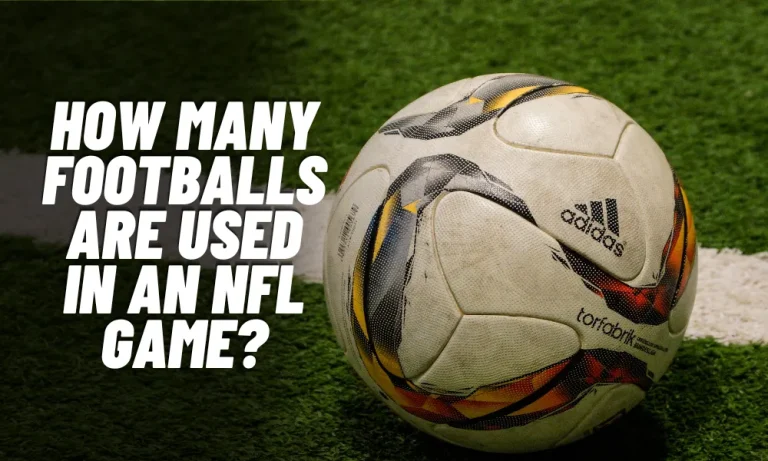What Is The Blue Flag In Football?
If you’ve ever watched a football match, you may have noticed a flag being waved by an official on the sidelines. That flag, known as the blue flag, holds significant importance in the world of football. In this article, we will delve into the meaning and significance of the blue flag, its role in the game, and its impact on fair play and player safety. Additionally, we will explore the controversies surrounding its use and provide insights into its historical background. So, let’s unravel the mystery of the blue flag and discover its true meaning in the realm of football.
Understanding the Blue Flag
In football, the blue flag holds a crucial role in ensuring fair play and maintaining the integrity of the game. When the blue flag is raised, it signifies that an offside offense may have occurred. Offside is a rule that prevents players from gaining an unfair advantage by being closer to the opponent’s goal line than both the ball and the second-to-last defender at the moment the ball is played to them. The blue flag assists the referee in making accurate offside decisions.
The blue flag is typically used by assistant referees, also known as linesmen, who are positioned along the touchlines. When they suspect an offside offense, they raise the blue flag to signal to the referee and players that the play should be stopped. This allows the referee to assess the situation and make a decision accordingly. It’s important to note that the blue flag is only a signal to indicate a possible offside offense; the final decision lies with the referee.
The responsibility of using the blue flag lies with the assistant referees, who are positioned on opposite sides of the field. They must have a clear view of the situation and raise the flag promptly when they believe an offside offense has occurred. It requires precise judgment and coordination with the referee to ensure the correct application of the offside rule. The blue flag serves as a visual aid, helping officials and players understand the potential violation and ensuring that the game is played fairly.
Offside Rule and the Blue Flag
Understanding the offside rule is crucial to comprehending the significance of the blue flag in football. The offside rule is in place to ensure fair play and prevent players from gaining an unfair advantage. When the blue flag is raised, it often indicates a potential offside offense.
The offside rule states that a player is in an offside position if they are nearer to the opponent’s goal line than both the ball and the second-to-last defender when the ball is played to them. The blue flag serves as a visual cue for the referee and players to identify a possible offside situation. It helps the referee make accurate decisions and maintain the fairness of the game.
When the blue flag is raised, the referee must assess the situation. If the player in the offside position becomes actively involved in the play, such as interfering with an opponent or gaining an advantage, the referee may penalize the team with an offside offense. However, if the player does not participate in the play or gain an advantage, the referee may choose to let the game continue without stopping the play.
The introduction of Video Assistant Referee (VAR) technology has added another layer of complexity to the offside rule. VAR can review close-offside decisions to ensure accuracy. However, it’s important to note that VAR can overrule the blue flag only if there is clear evidence to support the decision. The blue flag remains a crucial tool in assisting referees in making offside judgments, even in the era of technological advancements in football.
Controversies Surrounding the Blue Flag
The use of the blue flag in football has not been without controversies. One of the main concerns is the accuracy of offside decisions made based on the blue flag. Human error and subjective judgment can sometimes lead to incorrect calls, which can impact the outcome of a match.
Another controversy surrounding the blue flag is the timing of its raised. Assistant referees must make split-second decisions and raise the flag at the right moment. However, there have been instances where the flag is raised too early or too late, leading to confusion and potential unfairness.
Additionally, the interpretation of the offside rule itself has been a subject of debate. Some argue that the rule is too complex and subjective, making it challenging for officials and players to fully grasp and apply consistently. This has led to calls for potential revisions or simplifications of the offside rule to avoid controversies and promote a clearer understanding for everyone involved in the game.
While controversies exist, it’s important to acknowledge that the blue flag and the offside rule have been implemented to ensure fairness and maintain the integrity of football. They are tools aimed at creating a level playing field for all teams. The controversies surrounding the blue flag highlight the ongoing efforts to refine and improve football’s rules and regulations to provide the best possible experience for players and fans alike.
Blue Flag and Fair Play
The blue flag plays a crucial role in promoting fair play in football. By raising the blue flag, assistant referees assist the referee in making accurate offside decisions, ensuring that players do not gain an unfair advantage. This helps maintain the integrity of the game and ensures that all teams have an equal opportunity to compete.
Fair play is a fundamental principle of football, emphasizing respect, sportsmanship, and adherence to the rules. The blue flag is a visual cue that alerts players to a potential offside offense, allowing them to adjust their positions accordingly. This promotes fair competition by discouraging players from intentionally positioning themselves in an offside position to gain an advantage over their opponents.
Moreover, the blue flag also serves as a tool for education and learning. Players, coaches, and spectators can observe the flag being raised and understand the application of the offside rule. It encourages a deeper understanding of the game and helps players develop their tactical skills, ensuring fair play is upheld at all levels of football.
Overall, the blue flag’s presence in football highlights the sport’s commitment to fair play. It ensures that the game is played within the established rules, fostering a sense of sportsmanship, and creating an environment where skill and strategy triumph over unfair tactics. The blue flag serves as a reminder that football is not just about winning but also about playing with integrity and respect for the game.
Blue Flag and Player Safety
The blue flag in football not only promotes fair play but also contributes to player safety on the field. When the flag is raised, it indicates a potential offside offense, which can help prevent dangerous situations that may lead to player collisions or injuries.
By enforcing the offside rule through the blue flag, players are encouraged to maintain appropriate distances from opponents and avoid unnecessary physical contact. This reduces the risk of collisions and minimizes the chances of players getting injured in high-speed situations.
Moreover, the blue flag allows players to anticipate and react to offside situations, which can prevent dangerous challenges or tackles. When players are aware that an offside offense may occur, they can adjust their movements and actions accordingly, prioritizing safety and avoiding unnecessary confrontations.
In this way, the blue flag acts as a preventive measure to protect players from potential harm. It promotes a safer playing environment by encouraging players to adhere to the rules and make conscious decisions that prioritize their well-being and that of their opponents. Player safety is a paramount concern in football, and the blue flag plays a vital role in upholding this principle.
FAQ’s
1: What is the blue flag in football?
The blue flag is a visual signal used by assistant referees to indicate a potential offside offense during a football match.
2: Who raises the blue flag in football?
Assistant referees raise the blue flag to alert the referee and players about a potential offside situation.
3: What does the blue flag indicate to players?
The blue flag indicates that a player may be in an offside position, prompting them to adjust their positioning on the field.
4: How does the blue flag promote fair play?
The blue flag helps ensure fair play by preventing players from gaining an unfair advantage through offside positioning.
5: Does the blue flag contribute to player safety?
Yes, the blue flag promotes player safety by reducing the risk of collisions and dangerous challenges that may occur during offside situations.
Conclusion
The blue flag is much more than a mere piece of cloth in the world of football. It symbolizes fairness, safety, and the spirit of the game. Throughout its history, the blue flag has played a vital role in ensuring that matches are played with integrity and that players are protected from potential harm. Whether it’s assisting referees in making offside decisions or promoting fair play, the blue flag has become an integral part of football. However, like any aspect of the game, it has not been without controversy and room for improvement. Despite this, the blue flag continues to be a recognizable symbol on the football pitch, reminding us of the values that underpin this beautiful sport. So, the next time you see that blue flag being raised, remember its significance and appreciate the impact it has on the game we all love.


